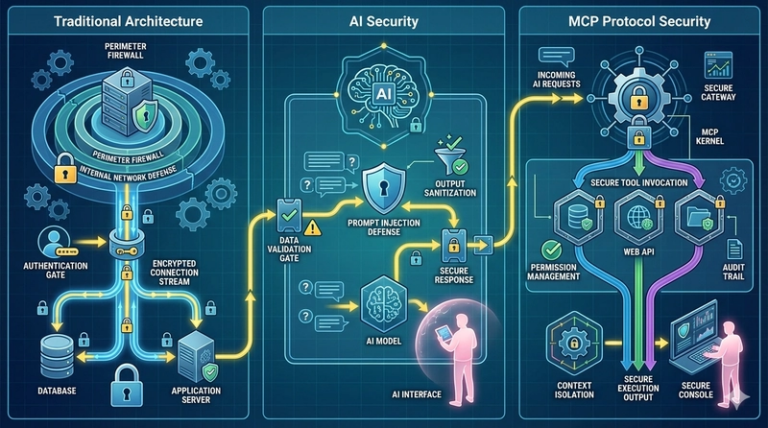Broken API Documentation: Why Developers Can’t Integrate Successfully
A developer’s perspective on the documentation crisis that’s holding back innovation
The Painful Reality: APIs That Promise but Don’t Deliver
We’ve all been there. You find an API that looks like it’ll solve all your problems. The demos are smooth, the pricing is reasonable, and their Twitter account posts actually funny memes. You’re hyped. You open the documentation in a new tab, ready to integrate this bad boy into your project and ship that feature by Friday.
Three hours later, you’re still stuck on the basics. The docs show you how to authenticate, how to make a GET request, but when you try to build something real – something that actually works with your existing tech stack – you hit wall after wall.
This isn’t just frustrating. It’s professional punishment.
As someone who volunteers with @Nexascale community sharing cloud tips and actively participates in developer Slack channels, I see this struggle daily. Developers are crying out for help, sharing screenshots of error messages, and spending entire weekends trying to figure out what should be simple integrations.
The truth is harsh but needs to be said: Most API documentation is broken, and it’s leaving developers to suffer in silence.
The Missing Piece: Real-World Integration Reality
Here’s what I’ve discovered through countless conversations with developers: API documentation consistently fails to address the elephant in the room – third-party integrations.
Think about it. When did you last build an application that used just one API? Never, right?
Your typical modern application needs:
- Authentication (Auth0, Firebase, or custom OAuth)
- Payments (Stripe, PayPal, or regional processors)
- File Storage (AWS S3, Google Cloud, or Azure)
- Email Services (SendGrid, Mailgun, or SES)
- Push Notifications (Firebase, OneSignal, or APNs)
- Analytics (Google Analytics, Mixpanel, or custom tracking)
Yet API documentation treats your API like it exists in a vacuum. They show you perfect, isolated examples that work great in their testing environment but fall apart the moment you try to integrate them with the real services your application actually needs.
The Gold Standard: When Documentation Gets It Right
Let me give credit where it’s due. Some companies understand this problem and have set the bar high:
Stripe remains the gold standard in 2025. Their documentation doesn’t just show you how to process payments – it shows you how to handle webhooks, integrate with different frameworks, manage subscriptions, and handle edge cases. Most importantly, they provide working examples that include common third-party integrations.
Twilio continues to be a standout example. They don’t just document their messaging API – they show you how to integrate it with popular frameworks, how to handle delivery receipts, and how to build complete communication workflows.
GitHub’s API documentation shines because they understand developers use their API alongside CI/CD tools, project management systems, and deployment platforms. They provide comprehensive examples that show real-world integration patterns.
OpenAI has emerged as a new leader in 2025, with documentation that clearly explains complex AI integrations and provides practical examples for different use cases and frameworks.
The Modern Documentation Tooling Revolution
What’s interesting is that we’re seeing a revolution in documentation tooling in 2025, which makes the excuse of “hard to maintain good docs” less valid:
Mintlify has become a game-changer by automatically generating clear documentation directly from API specifications. It saves massive amounts of time while maintaining high-quality standards through editable MDX files and seamless integration with React or Next.js sites.
Readme offers built-in features like user feedback, discussion forums, and analytics – making it ideal for SaaS companies that need robust developer engagement tools. Their API explorer makes it easier for developers to test and understand API functionality.
Other notable tools transforming the space include Document360’s all-in-one interactive documentation, SwaggerHub’s focus on API design and management, and Postman’s comprehensive lifecycle support.
The tools exist. The excuses are running out.
The Garri and Fish Principle
API documentation should be as simple and accessible as preparing garri and fish – straightforward, satisfying, and something anyone can follow without confusion. Just like you wouldn’t serve someone garri without explaining how to mix it properly or what fish goes best with it, you shouldn’t give developers API endpoints without showing them how these endpoints work in real applications.
But here’s what’s happening instead: API companies are serving developers plain garri and expecting them to figure out the fish, the water temperature, the mixing technique, and the seasoning all by themselves.
The Developer Tax: What This Broken System Costs
Every day, developers are paying a hidden tax because of incomplete documentation:
Time Wastage
- 60-80% of integration time is spent figuring out undocumented third-party connections
- Developers resort to trial-and-error instead of following clear guides
- Context switching between multiple incomplete documentation sources
Security Risks
- Without proper integration examples, developers implement insecure patterns
- Sensitive data handling across service boundaries becomes guesswork
- Authentication flows are implemented incorrectly, creating vulnerabilities
Productivity Loss
- Projects get delayed because of documentation gaps
- Teams waste time on problems that should have been solved once, properly
- Knowledge becomes trapped in individual developers’ heads instead of being shared
Innovation Stagnation
- Developers avoid trying new APIs because integration looks too complex
- Teams stick with familiar but inferior solutions
- The ecosystem grows slower because adoption barriers are artificially high
What’s Really Missing: The Integration Layer
The documentation gap isn’t just about missing information – it’s about missing the entire integration layer that makes APIs useful in real applications. Here’s what complete documentation should include:
Third-Party Service Integration Guides
- How to connect with popular authentication providers
- Payment gateway integration patterns
- Cloud storage service configurations
- Email service setup and best practices
- Push notification service implementations
Real Environment Examples
- Development vs. staging vs. production configuration differences
- Docker containerization examples that actually work
- Kubernetes deployment configurations
- CI/CD pipeline integration examples
Error Handling for Multi-Service Architectures
- How to handle failures when multiple services are involved
- Retry strategies for different types of third-party services
- Monitoring and alerting setup for complex integrations
- Debugging techniques for multi-service problems
Security Best Practices
- How to securely manage credentials for multiple services
- Data encryption patterns for multi-service architectures
- Rate limiting strategies that work across service boundaries
- Compliance considerations for different service combinations
The Business Case for Better Documentation
Here’s something that might surprise API companies: Better documentation isn’t just good for developers – it’s a competitive advantage.
Faster Adoption
When developers can successfully integrate your API on their first try, they’re more likely to choose your service over competitors. Clear, complete, and user-friendly API docs boost adoption and support developer success.
Reduced Support Costs
Every integration guide you don’t write becomes a support ticket you’ll have to answer. Every missing example becomes a frustrated developer who might switch to a competitor.
Developer Advocacy
Developers who have positive integration experiences become your advocates. They recommend your API to colleagues, write blog posts about successful implementations, and contribute to your ecosystem.
Market Differentiation
In a crowded API marketplace, superior documentation can be the deciding factor between similar services. Developers will choose the API they can integrate successfully over the one with better features but terrible docs.
The Solution: Bridging the Documentation Gap
This problem is solvable, but it requires a fundamental shift in how we think about API documentation. Here’s what needs to happen:
1. Document the Ecosystem, Not Just the API
Stop treating your API like it exists in isolation. Document how it works with the other services developers actually use.
2. Provide Complete, Working Examples
Not just code snippets, but complete applications that show real-world integration patterns. Include setup instructions, configuration files, and deployment guides.
3. Maintain Integration Compatibility
Keep track of how your API works with different versions of popular third-party services. Update documentation when dependencies change.
4. Build Community-Driven Examples
Create repositories where developers can contribute and maintain integration examples. This scales your documentation effort and ensures it stays current.
5. Test Your Documentation
Have someone who hasn’t worked on your API try to follow your integration guides. If they can’t complete a real-world integration, your documentation isn’t complete.
A Call to Action
The broken state of API documentation isn’t inevitable. It’s a choice – a choice to prioritize marketing over developer experience, to ship fast over shipping complete, to assume developers will figure it out rather than helping them succeed.
Developers deserve better. They deserve documentation that respects their time, acknowledges their real-world constraints, and provides the complete information they need to build successful integrations.
API companies deserve better too. They deserve the increased adoption, reduced support costs, and competitive advantages that come from truly helpful documentation.
Let’s Fix This Together
As someone who’s witnessed this problem across multiple developer communities, I’m committed to helping bridge this gap. Whether you’re a developer struggling with incomplete documentation or an API company that wants to provide better developer experience, this is a problem we can solve together.
The future of API integration doesn’t have to be filled with frustration, trial-and-error, and weekend debugging sessions. With complete, real-world documentation that covers the entire integration ecosystem, we can make API integration as straightforward as it should be.
Because good documentation isn’t just about explaining endpoints – it’s about empowering developers to build amazing things without unnecessary struggle.
Are you an API company looking to improve your developer experience? Or a developer who’s tired of incomplete documentation? Let’s connect and work together to solve this problem. The developer community deserves documentation that actually works.
Contact me to discuss how we can make API integration better for everyone.


